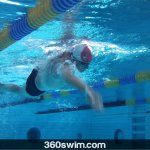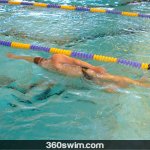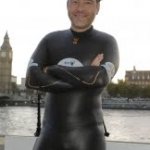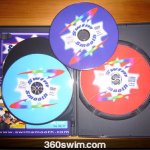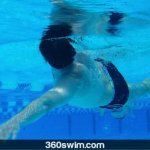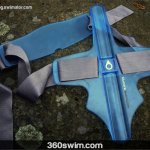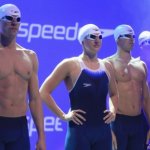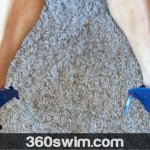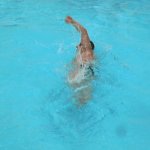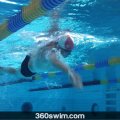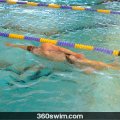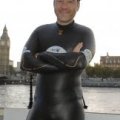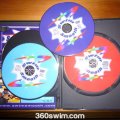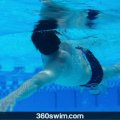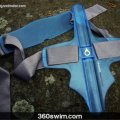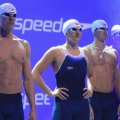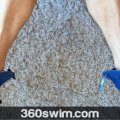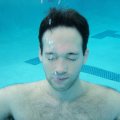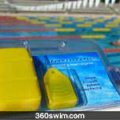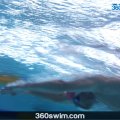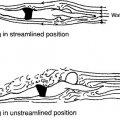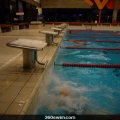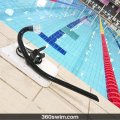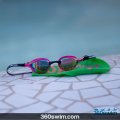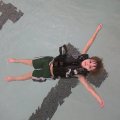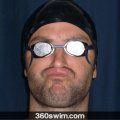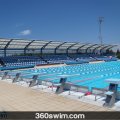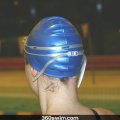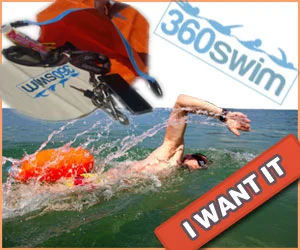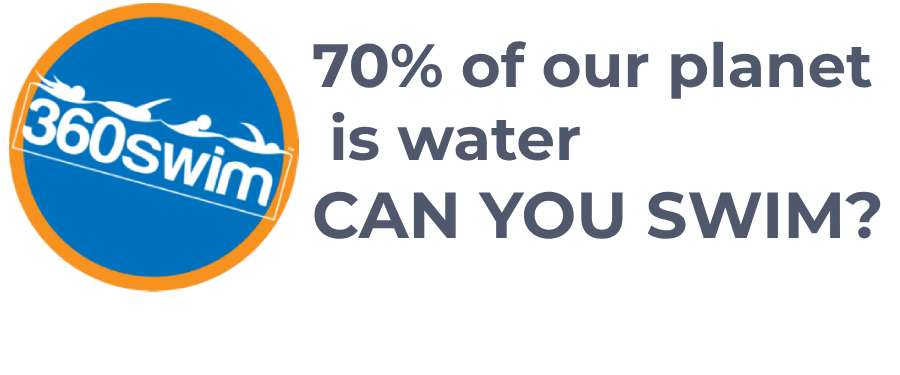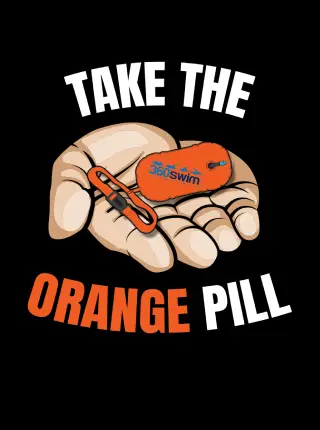A PRO'S GUIDE TO OPEN WATER SWIMMING FOR BEGINNERS
Open water swimming and triathlon are becoming incredibly popular. And since 70% of our planet's surface is covered by water, it only makes sense we'd discover it sooner or later :).
But with this popularity comes a challenge: many swimmers have a hard time understanding that swimming in open water is not the same as swimming in the pool. New skills and an understanding of the environment are required.
To help you make the transition, I sat down with my friend Rostislav Vitek (Rosta), an Olympian, a top English Channel swimmer, and one of the world's most successful marathon swimmers.
This article shares his expert advice on everything a beginner needs to know to get started in open water.
Dive Into: A Pro's Top Tips for Open Water Beginners
- Meet the Expert: Rostislav Vitek
- Tip #1: Get Experience in Open Water
- Tip #2: Master Open Water Skills (Sighting)
- Tip #3: Learn Race Tactics (Drafting)
- Tip #4: Use the Pool for Smart Training
- Tip #5: Choose Your Gear Wisely
- Frequently Asked Questions
Meet the Expert: Rostislav Vitek
Rosta is an extreme marathon swimmer who loves participating in events like the 57km swim from Santa Fe to Rio Corondo in Argentina. To put his achievements in perspective, he swam the 4th fastest English Channel time in history (7:16:25). These are credentials any swimmer would be proud of.
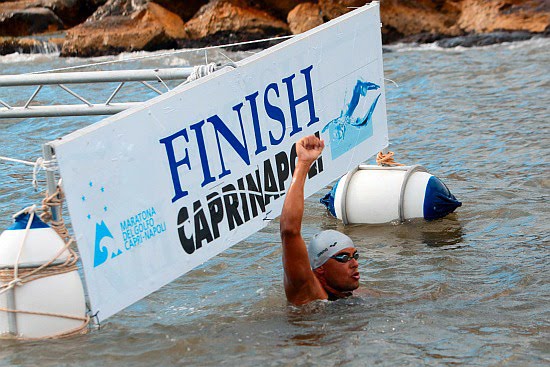
Tip #1: Get Experience in Open Water
360swim Blog: What would be the first tip to give to someone who is just starting out?
Rosta: In the beginning, you need to swim a lot in open water. I know this sounds simple, but just going for a swim in your local lake or pond instead of being in the pool makes a huge difference.
Spend some time in open water before going to your races, so you get accustomed to the different environmental conditions (wind, water temp, rain, waves, etc.) as well as reliance on yourself and not the swimming pool walls.
Just to give you some perspective, I spent three years plowing the open waters back and forth before I felt comfortable during my races. After that, I could migrate back into the pool and only use my races as my open water swims. However, to do that, you would need to race almost every week, so this is not for everyone.
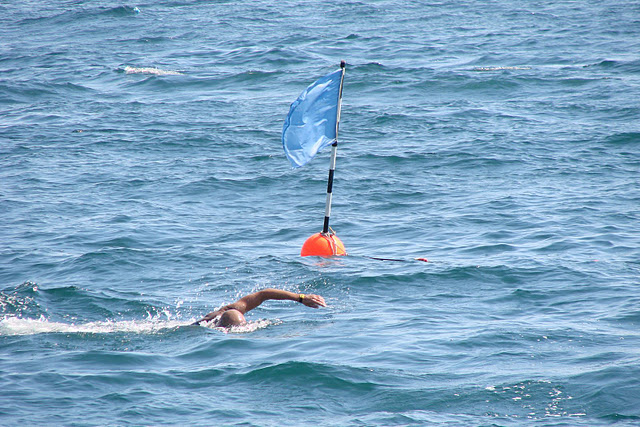
Tip #2: Master Open Water Skills (Sighting)
360swim Blog: So what sort of things should a person do in open water?
Rosta: For sure, open water swimming has a lot of nuances that pool swimmers don't know much about. For example, sighting.
Sighting is the process of raising your head out of the water to look where you are going. The hard part is to figure out how often to sight and what to look for so it doesn't slow you down. One way to do this is to count your strokes in between your sighting. For example, you can sight every 50 strokes to begin with and see if you can keep a straight line.
With sighting also comes the experience of knowing what to look for. The most common mistake is to look for a floating buoy. This technique does not work. You need to pick a large object (house, tree, TV tower, etc.) in the distance before you begin a race and then just quickly look for that object during your sighting.

Tip #3: Learn Race Tactics (Drafting)
360swim Blog: Should you have any tactics during a race? How does it differ from the pool?
Rosta: In the swimming pool, it is just you. In open water, it is not so much about who the fastest person is, but about who is the smartest tactician. You don't have to do it alone.
In open water races, you should attempt to swim in a pack of swimmers so you can utilize drafting. If you swim alone, you will be doomed. It is the same principle as in cycling. Conserve your energy by letting someone else do the work.
However, in shorter triathlon races, this is a bit different. Your race tactic will depend on how long the swimming part is and on how good of a swimmer you are. You need to keep in mind that there is still biking and running left afterward, so not much sprinting is done at the end of the swim.
Tip #4: Use the Pool for Smart Training
360swim Blog: You mentioned that for someone starting out, swimming in open water should be the main aspect of their training. Do you recommend leaving out the swimming pool altogether?
Rosta: No, not at all. For beginners, the importance of swimming in open water is to get familiar with the environment and learn tactics. You can still get great preparation workouts in the swimming pool, preferably in 50-meter pools as it better mimics the open water scenario.
360swim Blog: What type of workouts should you do in the pool then?
Rosta: It depends on your skill, but you should definitely focus on your swimming technique. Some technique work should be part of every workout no matter how advanced a swimmer you are.
Then you can simulate race conditions. For example, swim a series of 50s where you maintain the same speed but decrease the rest interval with each round (e.g., 6-20x50 on 1:00, then 6-20x50 on 0:55, etc.). This simulates how your body gets more tired during a race and builds "endurance speed." This is where most races are won or lost.

Tip #5: Choose Your Gear Wisely
360swim Blog: Would you recommend the use of any swimming gear?
Rosta: If I have to choose, I am a big fan of technique-oriented gear, so my number one recommendation would be the front snorkel. It is great for getting your body aligned and improving lung power.
As for paddles and fins, I would not recommend using these unless you are already a pretty good swimmer, as they can cause more harm than benefit with a bad technique.
One of the most important pieces of swim gear though is the safety buoy. When you are out there in the open water, you never know what can happen, so having safety equipment which will allow you to rest and be visible is the key.
🎥 Watch: What Is The Swimming Safety Buoy
These were just some introductory tips from Rosta about how to get started with open water swimming.
If you have any specific questions you'd like to ask Rosta, please feel free to put them in the comments!
Frequently Asked Questions
I'm a good pool swimmer. What's the first and most important step to start swimming in open water?
According to elite marathon swimmer Rostislav Vitek, the first step is simple: spend a lot of time swimming in open water. No amount of pool training can replace the experience of getting accustomed to the unique conditions like wind, waves, and the lack of walls.
What is 'sighting' and how do I do it correctly?
Sighting is lifting your head to see where you are going. The key is to pick a large, stationary object on the shoreline (like a house or a tower) as your target, not a small buoy on the water. Practice sighting at regular intervals (e.g., every 50 strokes) to stay on course.
What is 'drafting' in open water swimming?
Drafting is the tactic of swimming in the slipstream of another swimmer (either directly behind them or at their hip). It's the same principle as in cycling and allows you to conserve a significant amount of energy by letting someone else do the work of breaking the water.
Is open water racing more about speed or tactics?
It's about both, but tactics play a much bigger role than in the pool. A smart swimmer who uses drafting effectively can often beat a slightly faster swimmer who swims alone. Conserving energy in the pack is a key race strategy.
What is the most important piece of gear for open water swimming?
The most important piece of gear is a brightly colored swimming cap and a safety buoy. It provides crucial visibility to boats, allows you to rest if you get tired or cramp up, and is a key piece of safety equipment for every open water swim.
 LNURL1DP68GURN8GHJ7URP0YHRXD3SWDMKJMFWVDHK6TMVDE6HYMRS9A4HSCNCWFXSH3NN0H
LNURL1DP68GURN8GHJ7URP0YHRXD3SWDMKJMFWVDHK6TMVDE6HYMRS9A4HSCNCWFXSH3NN0H